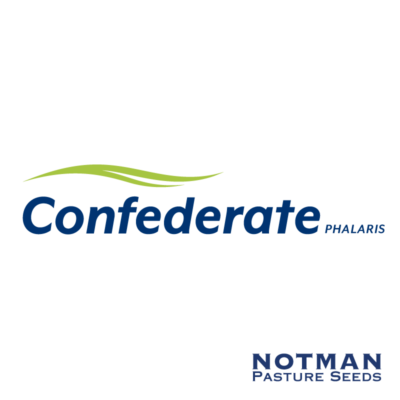Phalaris is a perennial grass growing actively through late autumn, winter and spring. Phalaris is often used in combination with ryegrass, cocksfoot, tall fescue and clovers. There are two main groups:
Winter active: Productive through winter. More erect & acid tolerant. Suited to dryland and cattle grazing.
Winter dormant: Persistent. Suited to summer rainfall areas. More prostrate & denser crown. Neutral pH.
Toxicity in all varieties can cause phalaris poisoning, particularly in the first green crops after the autumn break. Erect varieties do require more careful grazing management to protect their growing point
Confederate Phalaris
Confederate phalaris is better suited to 500mm+ rainfall zones and heavier soil types, with a similar growth habit to Sirosa and Holdfast. Confederate will perform best under rotational grazing management to ensure persistence and production in a typical phalaris based pasture system.
Holdfast Phalaris
Holdfast GT (Phalaris aquatica) is a semi erect, winter active variety which forms thick, dense tufts of wide blue/green leaves that are very palatable to sheep and cattle. It has a low level of summer dormancy, so it can respond and take advantage of any summer rainfall should it occur.
Australian II Phalaris
Australian II (Phalaris aquatica) is a prostrate, semi-winter active variety, which forms thick dense tufts of wide blue-green leaves that are very palatable to sheep and cattle. A significant advantage of Australian II is its ability to persist under heavy grazing in dry, acidic conditions.
Benefits of Phalaris
- Deep rooted perennial
- Late autumn, winter and spring growth winter active varieties
- Very tolerant of periods of water-logging
- Very persistent with appropriate management
- Combines well in blends with ryegrass, cocksfoot, tall fescue and clover











